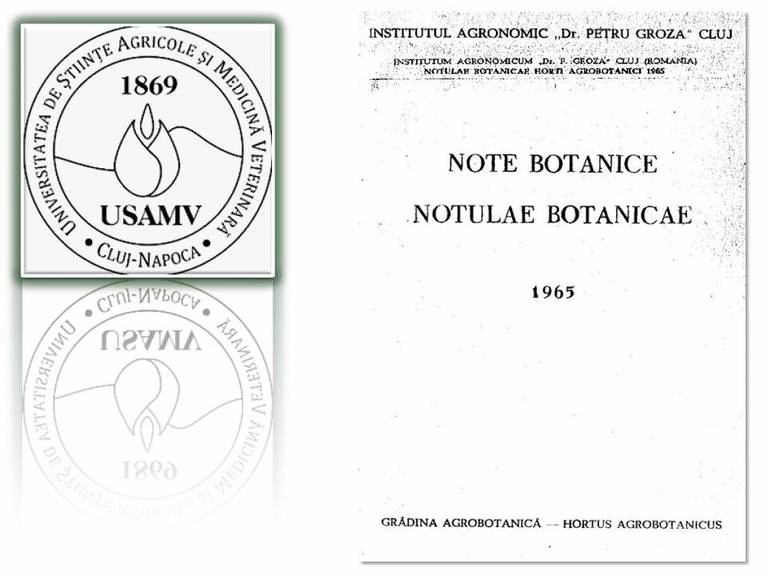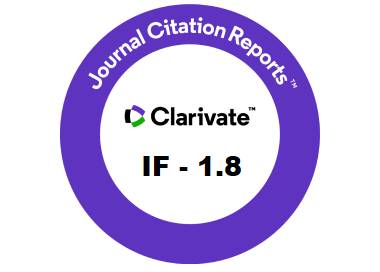Assessment of herbaceous vegetation classification using orthophotos produced from the image acquired with unmanned aerial systems
DOI:
https://doi.org/10.15835/nbha51313227Keywords:
image classification, Image enhancement, maximum likelihood classification, reed canary grass, Phalaris arundinacea, simple random samplingAbstract
Arguably the most popular remote-sensing products are classified images. However, there are no definitive procedures to assess classification accuracy that simultaneously consider resources available and field efforts. The explosive usage of unmanned aerial systems (UAS) in land surveys adds new challenges to classification assessment, as orthorectified images usually contain significant artifacts. This study aims to identify the optimal ratio between training and validation sample size within a supervised classification approach applied to UAS orthophotos. As a case study, we used a wetland area west of Portland, OR, USA, treated with various glyphosate formulations to control Phalaris arundinacea, commonly known as reed canary grass. A completely randomized design with five replications and six glyphosate formulations was used to assess P. arundinacea vigor following repeated herbicide applications. The change in P. arundinacea vitality was monitored with high-resolution four-band imagery acquired with a SlantRange 3PX camera installed on a DJI Matrice 210. The orthophotos created from images were produced with Pix4D, which was subsequently preprocessed with ERDAS Imagine 2020 to reduce the noise, shadows, and artifacts. All images were classified with the maximum likelihood classification algorithm. Simple random and stratified random sampling methods were applied to collect training and validation samples, evaluating eight ratios of training to validation samples to assess their classification accuracy. We found that increasing the training-to-validation sample size ratio enhances accuracy, with the 3:1 ratio being the most reliable in classifying P. arundinacea vigor. Our study provides evidence that image preprocessing and enhancement are essential for UAS-based imagery.
References
Adams CR, Galatowitsch SM (2006). Increasing the effectiveness of reed canary grass (Phalaris arundinacea L.) control in wet meadow restorations. Restoration Ecology 14(3):441-451. https://doi.org/10.1111/j.1526-100X.2006.00152.x
Chen D, Stow D (2002). The effect of training strategies on supervised classification at different spatial resolutions. Photogrammetric Engineering and Remote Sensing 68 (11):1155 -1162.
Congalton RG (1991). A review of assessing the accuracy of clas
sifications of remotely sensed data. Remote Sensing of Environment 37(1):35-46. https://doi.org/10.1016/0034-4257(91)90048-B
ERDAS IMAGINE Help (2019). Retriveved 2022 December 15 from: http://localhost:8080/imaginehelp/html/index.htm#ii_haze_hazediag.htm
Foody GM (2002). Status of land cover classification accuracy assessment. Remote Sensing of Environment 80:185-201 https://doi.org/10.1016/S0034-4257(01)00295-4
Foody GM (2009). Sample size determination for image classification accuracy assessment and comparison. International Journal of Remote Sensing 30(20):5273-5291. https://doi.org/10.1080/01431160903130937
Foody GM, Mathur A (2004). Toward intelligent training of supervised image classifications: Directing training data acquisition for SVM classification. Remote Sensing of Environment 93(1):107-117. https://doi.org/10.1016/j.rse.2004.06.017
Foody GM, Pal M, Rocchini D, Garzon-Lopez CX, Bastin L (2016). The sensitivity of mapping methods to reference data quality: training supervised image classifications with imperfect reference data. ISPRS International Journal of Geo-Information 5(11):11. https://doi.org/10.3390/ijgi5110199
Franklin SE, Peddle DR, Wilson BA, Blodgett CF (1991). Pixel sampling of remotely sensed digital imagery. Computers & Geosciences 17(6):759-775. https://doi.org/10.1016/0098-3004(91)90059-M
Gallego FJ (2004) Remote sensing and land cover area estimation. International Journal of Remote Sensing 25:3019-3047. https://doi.org/10.1080/01431160310001619607
Haque MN, Uddin MS (2011). Accelerating Fast fourier transformation for image processing using graphics processing unit. Journal of Emerging Trends in Computing and Information Sciences 2(8):317-336.
Heath ME, Barnes RF (1985). Forages: The science of grassland agriculture. (No. 633.2 H42 1985).
Janssen LLF, Vanderwel FJM (1994). Accuracy assessment of satellite derived land-cover data: A review. Photogrammetric Engineering and Remote Sensing; (United States) 60:4. https://www.osti.gov/biblio/6448244
Jensen JR (1996). Introductory digital image processing: a remote sensing perspective (No. Ed. 2). Prentice-Hall Inc.
Jiang S, Jiang C, Jiang W (2020). Efficient structure from motion for large-scale UAV images: A review and a comparison of SfM tools. ISPRS Journal of Photogrammetry and Remote Sensing 167:230-251. https://doi.org/10.1016/j.isprsjprs.2020.04.016
Kaskie KD, Wimberly MC, Bauman PJ (2019). Rapid assessment of juniper distribution in prairie landscapes of the northern Great Plains. International Journal of Applied Earth Observation and Geoinformation 83:101946. https://doi.org/10.1016/j.jag.2019.101946
Khorram S, Koch FH, Wiele CF van der, Nelson SAC (2012). Remote Sensing. Springer Science & Business Media.
Landgrebe DA (2003). Signal Theory Methods in Multispectral Remote Sensing. John Wiley & Sons
Lillesand T, Kiefer RW, Chipman J (2015). Remote Sensing and Image Interpretation. John Wiley & Sons
Lu D, Weng Q (2007) A survey of image classification methods and techniques for improving classification performance. International Journal of Remote Sensing 28:823-870. https://doi.org/10.1080/01431160600746456
Millard K, Richardson M (2015). On the importance of training data sample selection in random forest image classification: a case study in peatland ecosystem mapping. Remote Sensing 7(7):7. https://doi.org/10.3390/rs70708489
Noviello M, Ciminale M, De Pasquale V (2013). Combined application of pansharpening and enhancement methods to improve archaeological cropmark visibility and identification in QuickBird imagery: two case studies from Apulia, Southern Italy. Journal of Archaeological Science 40:3604-3613. https://doi.org/10.1016/j.jas.2013.04.013
Pal M, Mather PM (2003). An assessment of the effectiveness of decision tree methods for land cover classification. Remote Sensing of Environment 86(4):554-565. https://doi.org/10.1016/S0034-4257(03)00132-9
Paveglio FL, Kilbride KM (2000). Response of vegetation to control of reed canary grass in seasonally managed wetlands of southwestern Washington. Wildlife Society Bulletin 28(3):730-740.
Pix4D (2017) Manual – Support. Retrieved 2023 May 2 from: https://support.pix4d.com/hc/en-us/sections/360003718992-Manual
Powell RL, Matzke N, de Souza C, Clark M, Numata I, Hess LL, Roberts DA (2004). Sources of error in accuracy assessment of thematic land-cover maps in the Brazilian Amazon. Remote Sensing of Environment 90(2):221-234. https://doi.org/10.1016/j.rse.2003.12.007
Radoux J, Lamarche C, Van Bogaert E, Bontemps S, Brockmann C, Defourny P (2014). Automated training sample extraction for global land cover mapping. Remote Sensing 6(5):5. https://doi.org/10.3390/rs6053965
Sampat MP, Bovik AC, Aggarwal JK, Castleman KR (2005) Supervised parametric and non-parametric classification of chromosome images. Pattern Recognition 38:1209-1223. https://doi.org/10.1016/j.patcog.2004.09.010
Sanna A (2020). Monitoring wetland invasive vegetation with drones: pilot study on reed canary grass. https://expo.uw.edu/expo/apply/577/proceedings/result?student_name=astrid&commit=Search
Särndal C-E, Swensson B, Wretman J (2003). Model Assisted Survey Sampling. Springer Science & Business Media.
Schonberger JL, Frahm JM (2016). Structure-from-motion revisited. In: Proceedings of the IEEE conference on computer vision and pattern recognition, pp 4104-4113.
Seltman HJ (2018). Experimental Design and Analysis. Carnegie Mellon University pp 428. Retrieved 2023 April 14 from: https://www.stat.cmu.edu/~hseltman/309/Book/Book.pdf
Sisodia PS, Tiwari V, Kumar A (2014). Analysis of supervised maximum likelihood classification for remote sensing image. International Conference on Recent Advances and Innovations in Engineering (ICRAIE-2014), pp 1-4. https://doi.org/10.1109/ICRAIE.2014.6909319
Stehman SV, Czaplewski RL (1998). Design and analysis for thematic map accuracy assessment: fundamental principles. Remote Sensing of Environment 64(3):331-344. https://doi.org/10.1016/S0034-4257(98)00010-8
Strimbu BM (2014). Comparing the efficiency of intensity-based forest inventories with sampling-error-based forest inventories. Forestry 87:249-255. https://doi.org/10.1093/forestry/cpt061
Stuckens J, Coppin PR, Bauer ME (2000). Integrating contextual information with per-pixel classification for improved land cover classification. Remote Sensing of Environment 71:282-296. https://doi.org/10.1016/S0034-4257(99)00083-8
Sun J, Yang J, Zhang C, Yun W, Qun J (2013). Automatic remotely sensed image classification in a grid environment based on the maximum likelihood method. Mathematical and Computer Modelling 58(3):573-581. https://doi.org/10.1016/j.mcm.2011.10.063
Wang L, Zhou Y, Hu Q, Tang Z, Ge Y, Smith A, Awada T, Shi Y (2021). Early detection of encroaching woody juniperus virginiana and its classification in multi-species forest using UAS imagery and semantic segmentation algorithms. Remote Sensing 13(10):10. https://doi.org/10.3390/rs13101975
Winer BJ, Brown DR, Michels KM (1991). Statistical principles in experimental design. 3rd edn. McGraw-Hill, Boston MA.

Downloads
Published
How to Cite
Issue
Section
License
Copyright (c) 2023 Sudeera WICKRAMARATHNA, John GOETZ III, Jon SOUDER, Benjamin PROTZMAN, Brian SHEPARD, Sorin HERBAN, Francisco MAURO, Hailemariam TEMESGEN, Bogdan M. STRIMBU

This work is licensed under a Creative Commons Attribution 4.0 International License.
License:

Open Access Journal:
The journal allows the author(s) to retain publishing rights without restriction. Users are allowed to read, download, copy, distribute, print, search, or link to the full texts of the articles, or use them for any other lawful purpose, without asking prior permission from the publisher or the author.











.png)







